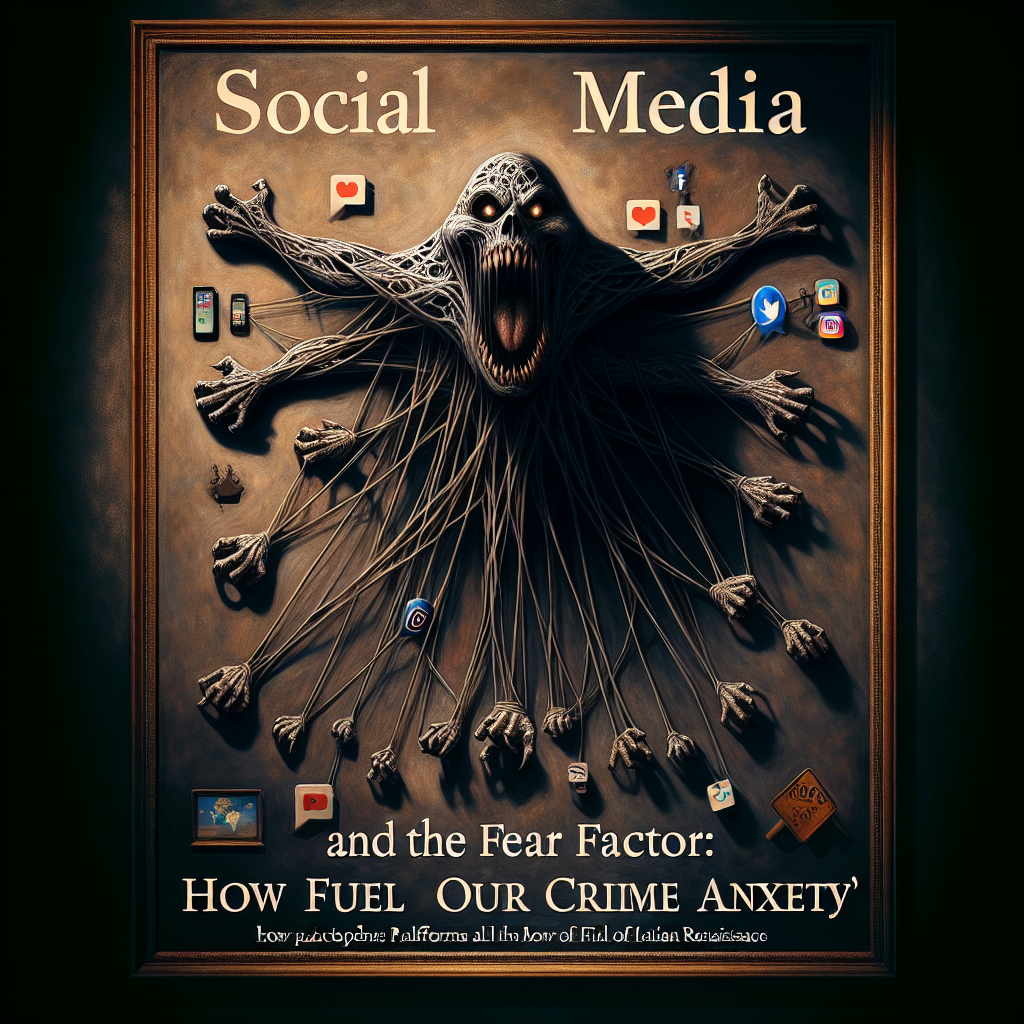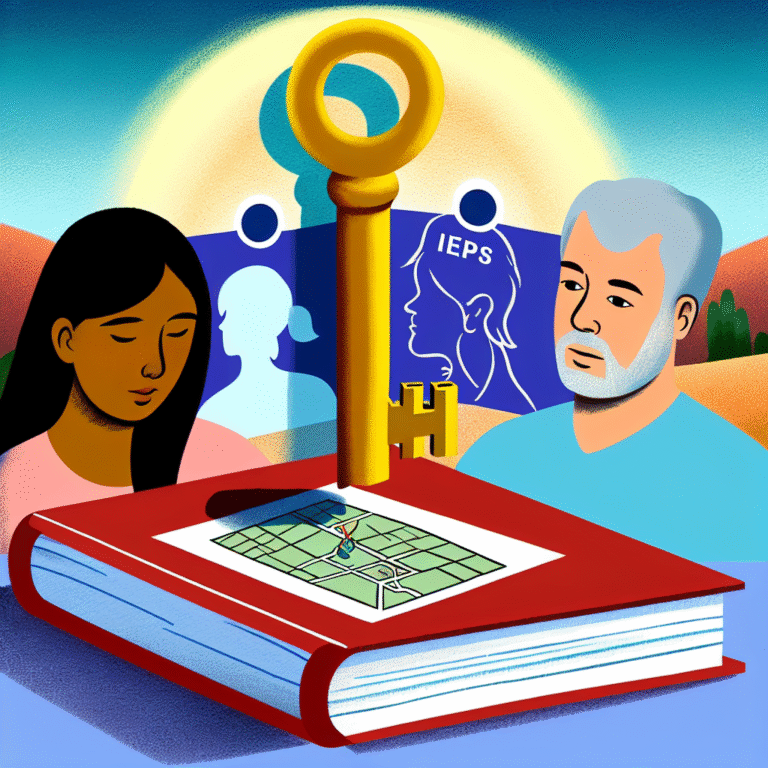
Introduction
In an era where social media dominates our daily lives, the intersection between online platforms and our psychological well-being is becoming increasingly apparent. As we scroll through feeds filled with news reports, videos, and personal anecdotes about crime, many of us find ourselves longing for a sense of security that seems perpetually just out of reach. This phenomenon—this anxiety fueled by our digital environments—is aptly encapsulated in the phrase Social Media and the Fear Factor: How Platforms Fuel Our Crime Anxiety.
Understanding this relationship is crucial, as it not only affects our perception of safety in our communities but can also influence our behaviors and decisions. As we delve deeper into this topic, we will uncover the mechanisms by which social media creates fear, the implications of this anxiety, and what we can do to navigate this complex landscape with greater awareness and resilience.
How Social Media Shapes Our Perception of Crime
The Role of Algorithms
Social media platforms utilize complex algorithms to curate content, prioritizing posts that generate the most engagement. This creates a feedback loop where sensationalized stories of crime gain precedence over less sensational but equally important news. As users, we encounter a higher frequency of crime-related content, which can skew our perception of real-world safety.
Case Study: The Rise of True Crime Content
The explosion of true crime podcasts and series on platforms like Netflix exemplifies this trend. This genre, while entertaining, often dramatizes criminal behavior and crime statistics, leading audiences to believe that crime is more prevalent than it actually is. A recent survey revealed that 73% of young people reported feeling more anxious about crime after consuming true crime media, highlighting the real-world effects of this content.
Social Validation of Fear
Social media also lends itself to a social validation of our fears. When users express anxiety about safety or crime, others may echo these sentiments, creating an environment where fear is not only normal but expected. This communal acknowledgment can escalate feelings of anxiety and lead to a collective sense of insecurity.
Table 1: Statistics on Crime Perception and Reality
| Type of Crime | Perceived Increase | Actual Increase |
|---|---|---|
| Violent Crime | 75% | 3% |
| Property Crime | 65% | -5% |
| Cybercrime | 80% | 10% |
The dissonance between perceived and actual crime rates can lead to a persistent state of fear among social media users, compelling them to alter their behaviors out of caution.
The Psychology of Fear in the Age of Social Media
The Dangers of Hyper-Reality
Jean Baudrillard’s concept of hyper-reality suggests that social media creates a distorted perception of reality, where users increasingly struggle to differentiate between fact and fiction. This hyper-reality is fortified by sensational crime reports, often leading to chronic fear and anxiety.
Case Study: The Viral Mugshot Incident
In 2013, the mugshot of a man named Jeremy Meeks went viral, resulting in massive public debate and speculation about crime and attractiveness. This incident illustrates how media portrayal can skew public perception about crime and its associated narratives—leading to misunderstandings and amplified fear surrounding crime in specific demographics.
Disinformation and Its Impact
Another significant aspect of Social Media and the Fear Factor: How Platforms Fuel Our Crime Anxiety is the role of disinformation. Fake news and sensational stories can spread rapidly, further contributing to a culture of fear. Users who encounter misleading information may react by becoming more vigilant or even paranoid regarding their environments.
Case Study: The “Panic Over Clowns” Hoax
In 2016, rumors spread on social media about clowns threatening children in various communities. This led to widespread panic, even though evidence suggested these reports were exaggerated or entirely fabricated. This situation reflects the power of social media to not just inform but also terrify—showing how misinformation can quickly fuel anxiety.
Strategies for Managing Crime Anxiety
Curating Your Feed
One effective method to combat the negative effects of social media is by curating your feed. Unfollowing accounts that perpetuate fear and seeking out content that emphasizes community safety and positivity can lead to a better mental state.
Table 2: Tips for Curating a Positive Social Media Feed
| Strategy | Implementation |
|---|---|
| Follow Positive News Outlets | Seek out local news sources that focus on community success stories. |
| Engage with Solution-Oriented Content | Follow accounts dedicated to community development and safety. |
| Limit Sensational Content | Unfollow true crime and sensationalist news accounts. |
Mindfulness and Awareness
Practicing mindfulness can also mitigate anxiety. Through techniques like meditation and conscious breathing, individuals can develop a better relationship with their thoughts and feelings about crime, reducing the power these anxieties hold.
The Social Responsibility of Social Media Platforms
Ethical Content Moderation
Social media platforms hold immense power over what content is amplified or suppressed. Greater attention to ethical content moderation can lead to a more responsible dissemination of information related to crime. By prioritizing accurate and balanced reporting, these platforms can help lessen the anxiety experienced by users.
Collaborating with Law Enforcement
Collaborative initiatives between social media companies and local law enforcement could also be beneficial. By providing accurate crime statistics and safety tips through engaged and trusted platforms, organizations can help users feel more secure.
Conclusion
The dynamic interplay between social media and crime anxiety cannot be understated. As we navigate platforms designed to connect us, it’s essential to remain mindful of the content we consume and how it shapes our perceptions. Initiatives aimed at enhancing awareness and promoting community safety can significantly mitigate the fear that often clouds judgment.
While Social Media and the Fear Factor: How Platforms Fuel Our Crime Anxiety presents undeniable challenges, it also offers an opportunity for personal transformation and societal change. By fostering positive online communities and prioritizing accurate information, we can reclaim our sense of security and well-being.
FAQs
1. How does social media amplify fear regarding crime?
Social media enhances fear about crime primarily through sensationalized content, algorithm-driven feeds that prioritize engaging posts, and the social validation of collective fears among users.
2. Can social media misleadingly represent crime statistics?
Yes, social media often exaggerates the prevalence of crime, resulting in a perception that crime is on the rise despite statistical evidence suggesting otherwise.
3. What are some ways to minimize crime anxiety from social media?
Users can minimize crime anxiety by curating their feeds, unfollowing sensationalist accounts, and engaging with content focused on community safety and positivity.
4. Are there studies linking social media use and increased anxiety?
Research shows that consistent exposure to crime-related content on social media correlates with higher levels of anxiety, particularly among younger audiences.
5. What role do social media platforms have in combating misinformation related to crime?
Platforms can combat misinformation by enhancing their content moderation policies, promoting accurate information, and collaborating with law enforcement agencies to provide real-time safety updates.
As we reflect on the profound relationship between social media and our collective psyche, let us cultivate environments—both online and offline—that prioritize understanding and security over fear. The challenge lies before us, but together we can reshape the narrative.















